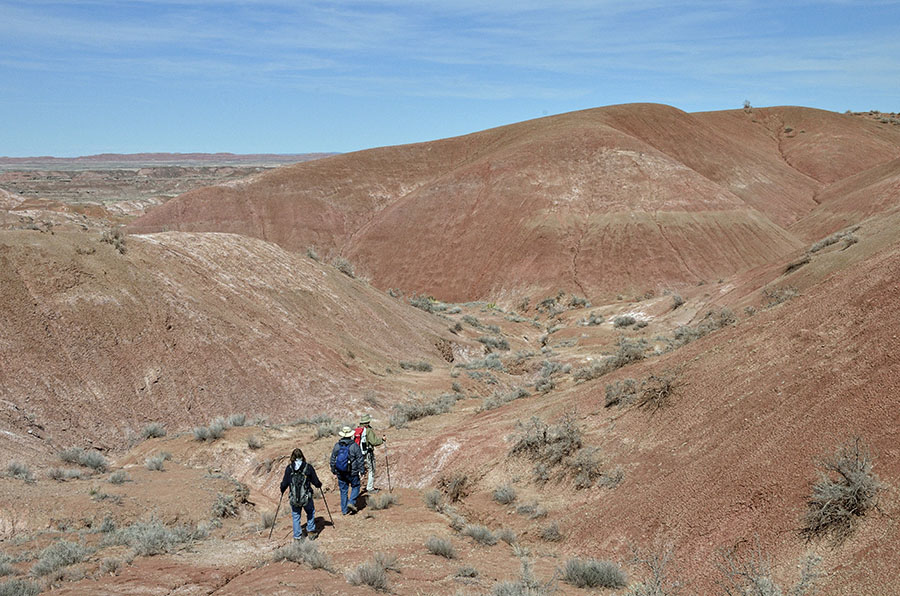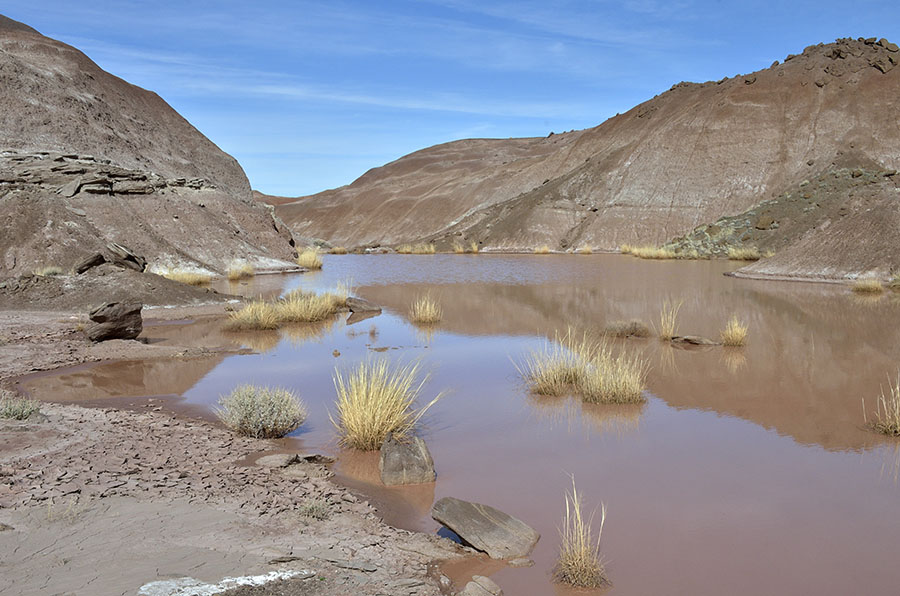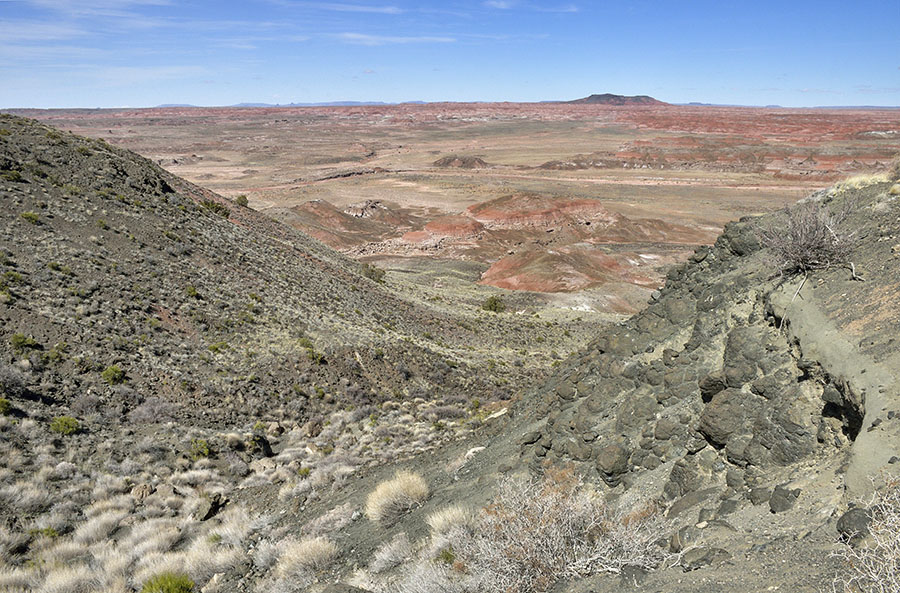As I mentioned in the last post that although we were gobsmacked at the beauty of the Painted Desert (we were in the section that’s in part of Petrified Forest National Park), we took things to the next level by joining some rangers for a hike down into the badlands. Just to refresh your memories, here is what it looks like from the rim at around 5700’…


…and here we go, dropping down into the washes between the bentonite hills.


Bentonite is a generic term for these fine-grained eroded hills, composed of different minerals which give them a variety of colors. The thing that’s important to remember about walking on bentonite is that when it gets wet, it turns to snot! There is no nicer term I can think of to describe the consistency, but it’s slippery, heavy, and clingy… and we would not want to try this in the rain!
Among the bentonite and scrub brush, we also found lots of beautiful mica-like gypsum.

You’re not allowed to collect any rocks or petrified wood in the national park, and we obeyed the rules… but of all the neat rocks we saw I found gypsum (which came in different colors) was the most tempting.
As we meandered around the badlands the rangers showed us a surprise – a hidden pond in the desert!

As the pond was drying at the edges the mud cracked and took on strange patterns.

At one time this whole area (elevation 5400′) was covered by fresh water, and we found plenty of evidence in the form of small shells from freshwater organisms.

And the inundation is what caused the wood in this area to petrify. Petrification starts when an organic material is saturated with dissolved minerals, and the minerals in this area came from volcanic ash. The process takes a very loooooong time as you can imagine, and eventually the minerals replace the original material (with few more steps and lots more time) and then: ta da! You have petrified wood.


In this part of Petrified Forest National Park a lot of the petrified wood is a dark color, which indicates the presence of magnesium. As you’ll see in the next post, the petrified wood in the southern part of the park displays more and brighter colors. Where the wood started to decompose before petrification began, crystals formed in the voids creating beautiful sparkles.

We thoroughly enjoyed our hike and the company of the ranger couple who led it – they shared a wealth of information and made this first day of our visit really special.













